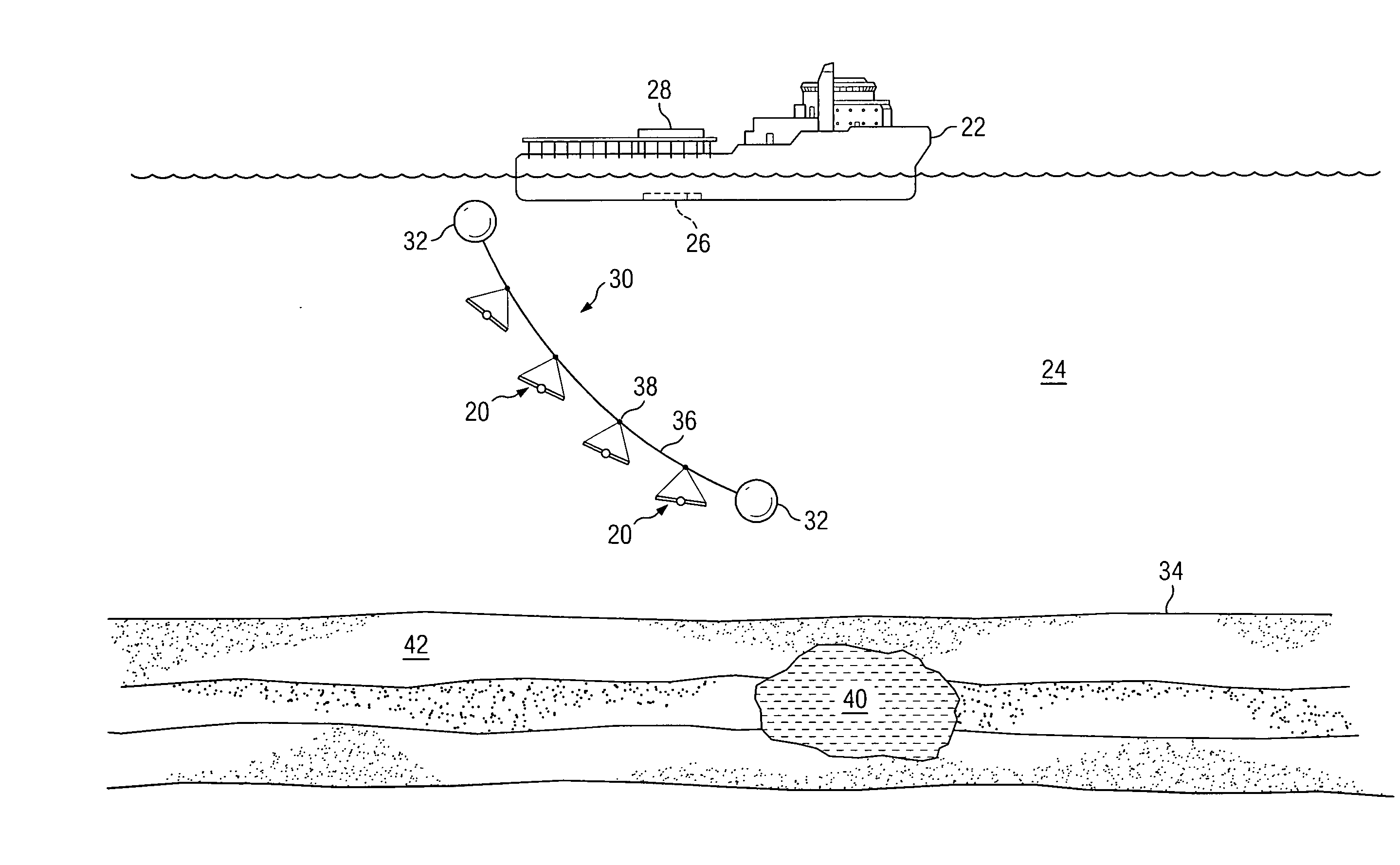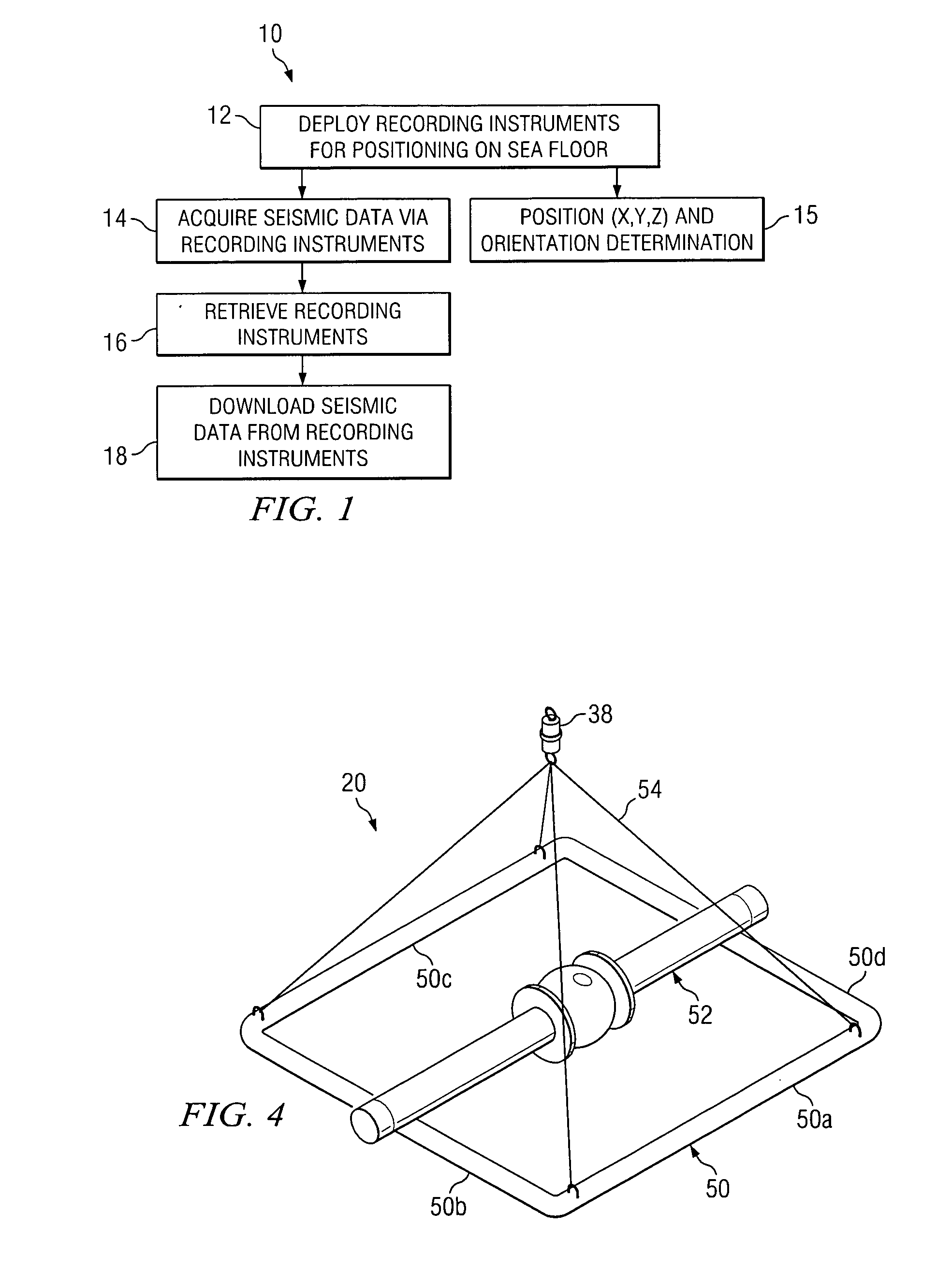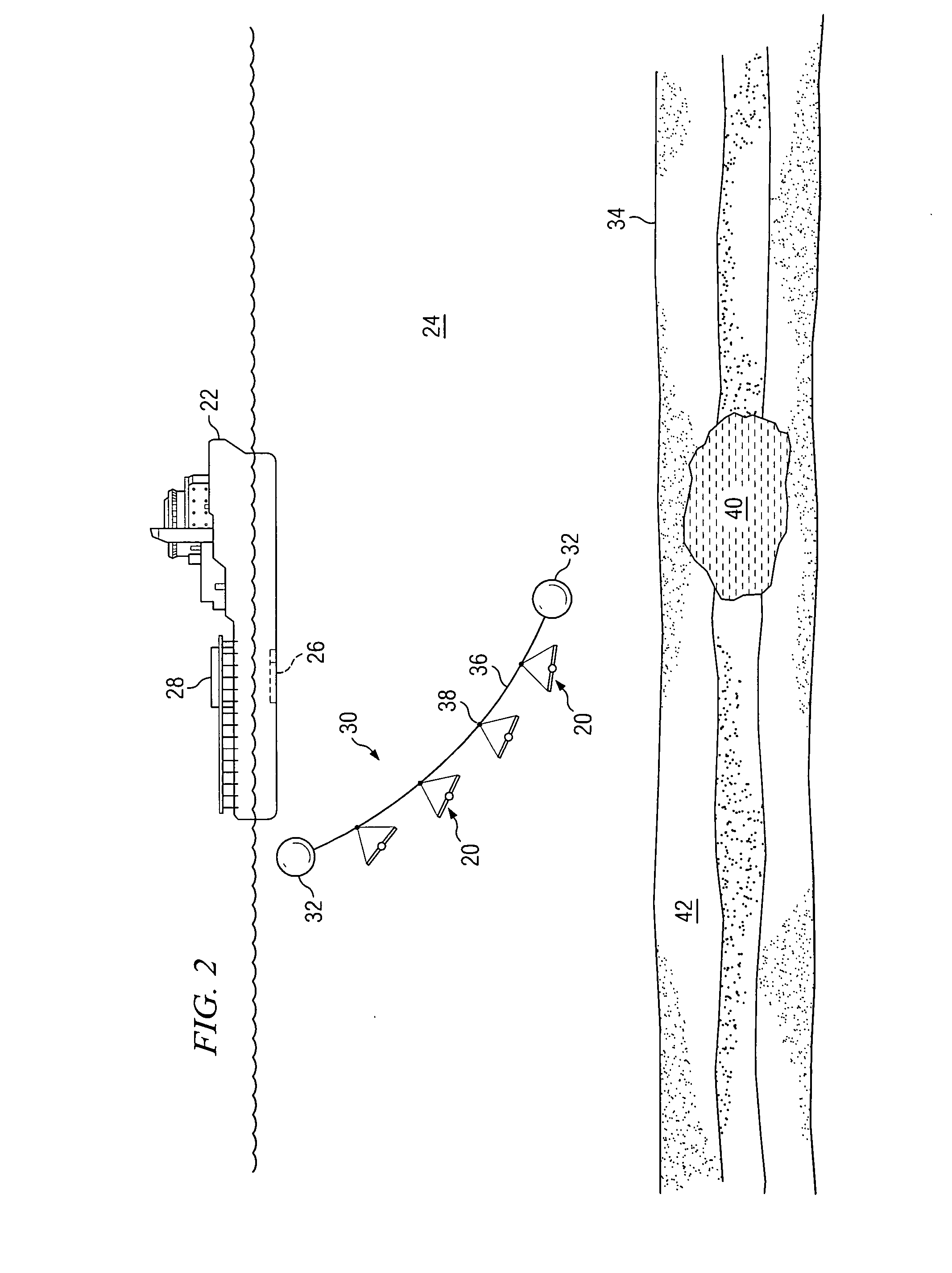Full wave seismic recording system
a full wave seismic and recording system technology, applied in seismology, seismology, instruments, etc., can solve the problems of inability to record s-waves, inability to provide sufficient sampling for gaining a true three-dimensional (3d) image, and high cos
- Summary
- Abstract
- Description
- Claims
- Application Information
AI Technical Summary
Benefits of technology
Problems solved by technology
Method used
Image
Examples
Embodiment Construction
[0027] Various aspects of full wave seismic recording systems and methods according to the present disclosure are described. It is to be understood, however, that the following explanation is merely exemplary in describing the systems and methods of the present disclosure. Accordingly, several modifications, changes and substitutions are contemplated.
[0028]FIG. 1 illustrates a block diagram 10 depicting general steps for acquiring seismic data according to the present disclosure. In one embodiment, the seismic data acquisition process begins with the deployment of seafloor recording instruments to the seafloor 12. Once positioned on the seafloor, the recording instruments acquire seismic data via recorder devices 14 to be described. Also, the position (expressed in x, y, z coordinates) and orientation of the instruments 15 on the seafloor is determined according to processes to be described. After acquisition of seismic data, the recording instruments are retrieved from the seafloo...
PUM
 Login to View More
Login to View More Abstract
Description
Claims
Application Information
 Login to View More
Login to View More - R&D
- Intellectual Property
- Life Sciences
- Materials
- Tech Scout
- Unparalleled Data Quality
- Higher Quality Content
- 60% Fewer Hallucinations
Browse by: Latest US Patents, China's latest patents, Technical Efficacy Thesaurus, Application Domain, Technology Topic, Popular Technical Reports.
© 2025 PatSnap. All rights reserved.Legal|Privacy policy|Modern Slavery Act Transparency Statement|Sitemap|About US| Contact US: help@patsnap.com



